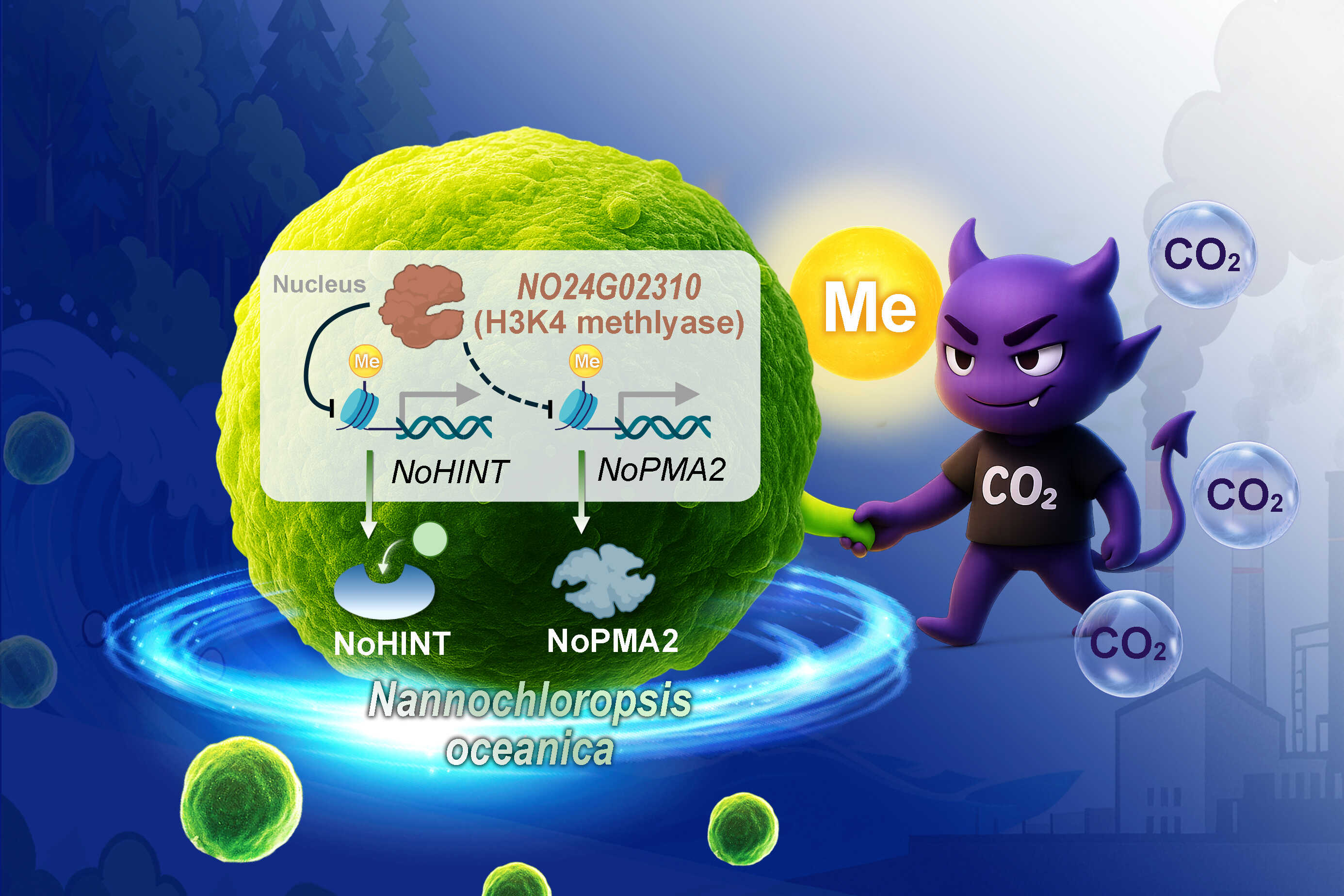Marine microalgae are vital drivers of Earth's carbon cycle, contributing approximately half of the planet's global primary production and sequestering tens of gigatons of carbon annually through photosynthesis. To survive and thrive in seawater with low carbon dioxide (CO2) levels, these microorganisms depend on specialized and efficient CO2-concentrating mechanisms (CCMs). For years, the regulatory factors that trigger CCM activation have remained incompletely understood-until recent scientific research began to unravel this biological process.
A research team from the Qingdao Institute of Bioenergy and Bioprocess Technology (QIBEBT) of the Chinese Academy of Sciences has identified a specific histone modification as the key regulator governing microalgae's adaptation to low-CO2 environments. Their findings were recently published in Plant Communications.
The study focused on Nannochloropsis oceanica, an industrially valuable microalga, tracking its epigenomic dynamics as it transitioned from an environment with 5% CO2 to one with just 0.01% CO2-a shift designed to mimic natural seawater conditions. Using multi-dimensional epigenomic sequencing techniques, the researchers discovered that global DNA methylation in the alga remained stable at 0.13%, effectively ruling out DNA methylation as a major driver of its low-CO2 response.
By contrast, histone H3K4 methylation-particularly H3K4me2-was found to be closely associated with 43.1% of the genes that respond to low-CO2 conditions. These genes include those critical to photosynthesis and ribosome biogenesis, two processes essential for the alga's survival under carbon-limited stress. Further analysis revealed that H3K4me2 appears to regulate gene transcription by altering chromatin accessibility, a mechanism that aligns with its role as a central regulator of low-CO2 adaptation.
"The biggest surprise was how histone modification, particularly H3K4me2, targets metabolic pathways critical for CO2 use," said Prof. GONG Yanhai, co-first author of the study. "For years, we suspected epigenetic regulation played a role in this adaptation. But ruling out DNA methylation and pinpointing H3K4 modification as a key driver is a critical advance for understanding how microalgae cope with low-CO2 environments."
To validate their findings, the team used CRISPR/Cas9 gene-editing technology. They knocked out NO24G02310-a gene that encodes an H3K4 methyltransferase, the enzyme responsible for adding methyl groups to H3K4. The modified algae showed a roughly 22% reduction in growth rate and a 15% decrease in biomass. Additionally, the levels of another histone modification (H3K4me1) dropped, and the genome-wide localization of H3K4me2 shifted-providing direct evidence of H3K4me2's role in low-CO2 adaptation.
Further experiments uncovered that H3K4 modification may act via two pathways: by regulating enzyme networks and by modulating chloroplast transmembrane pH gradients. Both mechanisms work to optimize the alga's use of available CO2, enhancing its survival under low-carbon conditions.
This study offers actionable targets for engineering microalgae to boost their carbon-fixation capabilities. This is significant for two global challenges: developing sustainable bioenergy sources and mitigating climate change through enhanced carbon sequestration, the researchers noted.

H3K4 histone modification mediates low-CO2 adaptation in Nannochloropsis: (Image by QIBEBT)






